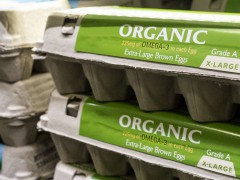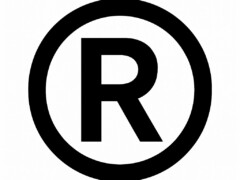
If you are a smaller-scale manufacturer, litigating a Prop 65 case is going to feel like the lawyers are robbing you
No manufacturer enjoys dealing with Proposition 65 claims. But for smaller businesses, the burden can be especially severe. Most lack the resources to wage a prolonged, idealisticly – motivated defense. For that reason, settling Prop 65 cases efficiently for smaller manufacturers is not only a strategic necessity—it’s a survival tactic. Understanding how to resolve these claims with minimal disruption and maximum predictability is essential.
Why Smaller Manufacturers Should Settle Prop 65 Claims Efficiently
The barrier to entry for Prop 65 litigation is incredibly low. A plaintiff can initiate a claim with nothing more than a 60-day notice letter and a plausible allegation for violation. A plaintiff establishes the “plausible allegation” that survives to litigation once a food product tests positive for a Prop 65 chemical. The statutory exemption for businesses with fewer than 10 employees applies so narrowly that it covers almost no real-world food producers. That means most small manufacturers end up facing costly lawsuits regardless of size. Because the claim is easily generated and the statutory defenses are so meager, it is favorable for smaller manufacturers to achieve an efficient settlement as early as possible.
However, small businesses do retain one strategic advantage in Prop 65 cases. Because penalties are calculated per unit, small production runs automatically cap the value of a claim. Therefore, the number of units sold limits the plaintiff’s maximum recovery. As a result, it is almost always possible to reach a rational settlement amount. The key is negotiating from a position of accurate, well-documented data that narrows the scope of exposure.
How Smaller Manufacturers Settle Prop 65 Claims Efficiently
Courts directly link damages to the number of product sales in Prop 65 cases. Achieving efficient and cost effective settlements depend on accurate sales data. Specifically, data that reduces exposure and supports a lower damage calculation. The key to an efficient Prop 65 Settlement is right here in the regulation: “No person in the course of doing business shall knowingly and intentionally expose any individual to a chemical known to the state to cause cancer or reproductive toxicity without first giving clear and reasonable warning…”
Here are two key ways smaller manufacturers can prepare for settlement by limiting “exposure”:
- Test Retained Samples. Using the lab your attorney hired (which maintains the attorney-client privilege over the results), attempt to replicate the plaintiff’s result. If the results of violation cannot be replicated, that is not a guarantee that the plaintiff’s firm will drop the claim. As mentioned above, the single test indicating a violation is enough to create a triable issue of fact. However, a manufacturer can definitely use a good result during settlement negotiations.
- Track production lots and batch numbers with precision. High-fidelity batch tracking is essential. It not only identifies the specific lots involved in a claim but also limits the number of affected units. Third-party testing can help confirm which lots contain the chemical in question—if any. Just make sure legal counsel commissions and directs the testing to preserve attorney–client privilege. This will prevent the creation of evidence that works against the defense. As we discussed in a recent blog post, all third-party analysis can be compelled through discovery if not acquired under the attorney-client privilege.
-
Document sales to customers, not just shipments. Proposition 65 defines a violation as a sale to a consumer in California—not a shipment to a distributor. This detail is critical. A manufacturer should only consider retail sales within California in any exposure calculation. By documenting these sales, a business avoids inflating the numbers and overpaying in settlement.
Final Thoughts
The smartest approach for small businesses is to control pace of negotiation by containing the numbers. With precise data, a focused legal strategy, and awareness of how Prop 65 penalties scale, smaller manufacturers can negotiate from a position of strength. In most cases, settling Prop 65 cases efficiently for smaller manufacturers is not about avoiding responsibility—it’s about resolving claims in a way that protects the business and preserves its future.
Our subscription service
Clients realize the greatest value out of our services when they stack them together comprehensively. Our subscription-based service plans enable our clients to weave our services into the fabric of their businesses at affordable and predictable rates.
















